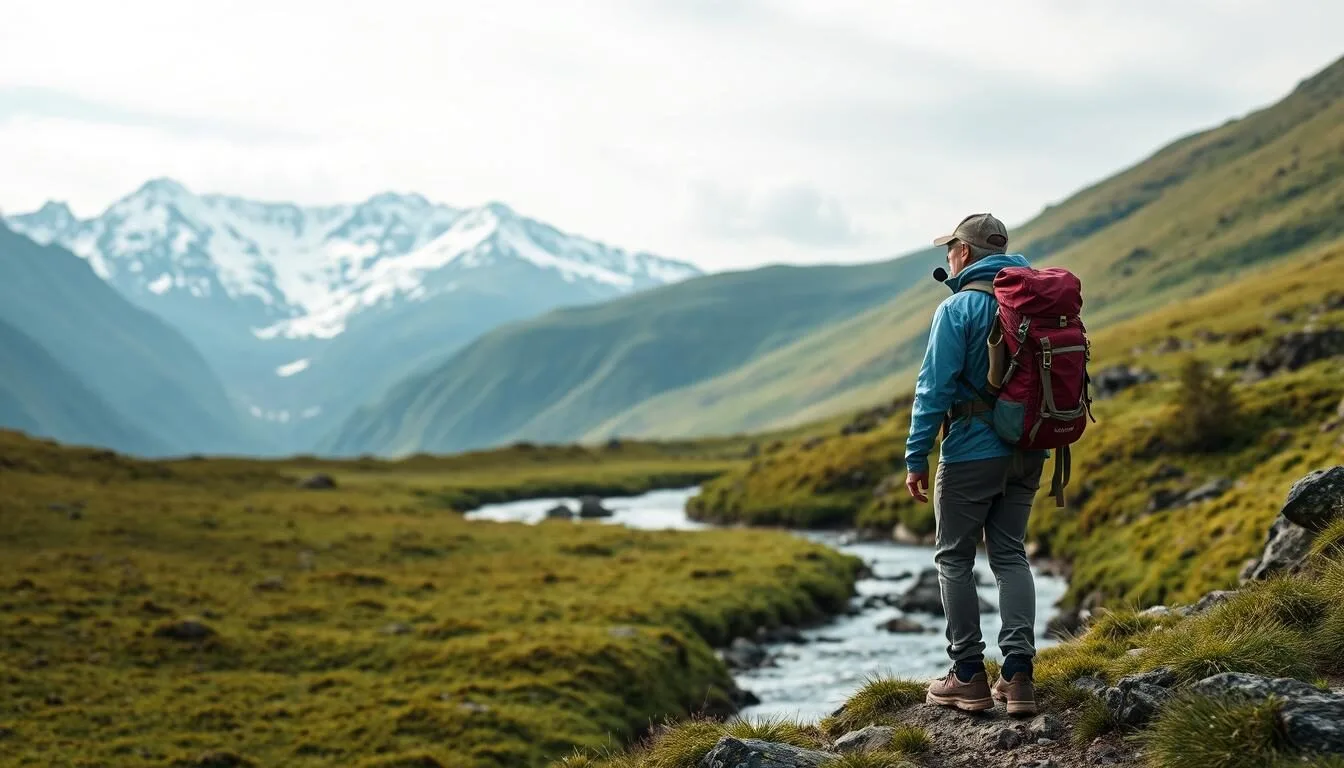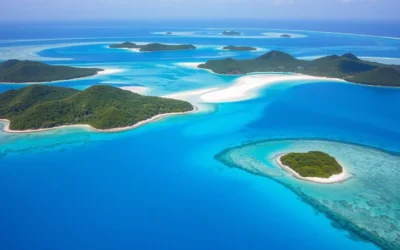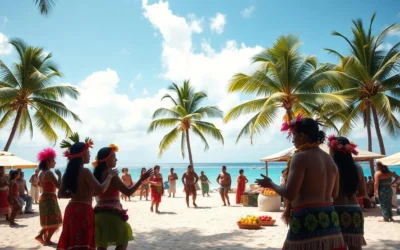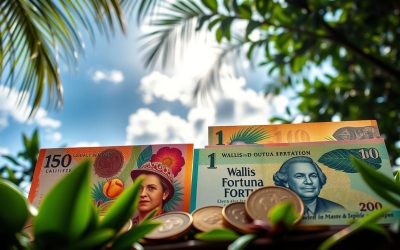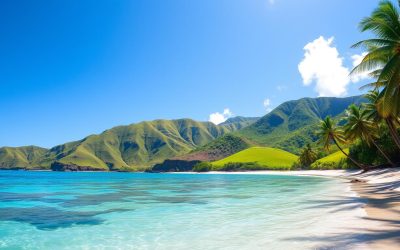✓ Accommodations ✓ Flights ✓ Rental Cars
Are you ready to escape to the tropical paradise of Wallis and Futuna? With its hot and sunny climate year-round, it’s an ideal destination for travelers seeking a warm getaway. But, did you know that the islands experience a significant amount of rainfall during certain months, potentially dampening your travel plans?
Understanding the best time to visit is crucial for making the most of your travel experience. The temperature typically varies from 77°F to 87°F throughout the year, making it suitable for various activities. By knowing the optimal months to visit, you can plan your trip accordingly and enjoy the beautiful islands to the fullest.
Understanding Wallis and Futuna’s Tropical Climate
Wallis and Futuna’s tropical climate is characterized by minimal temperature variations throughout the year. The climate is hot, oppressive, windy, and overcast, making it essential to understand the factors that influence these conditions.
The islands’ geographic location plays a significant role in shaping their climate. Located in the South Pacific Ocean, approximately 2,200 miles northeast of Australia and 300 miles west of Samoa, Wallis and Futuna’s remote archipelago consists of two main island groups separated by about 160 miles of ocean.
Geographic Location and Its Impact on Weather
The islands’ proximity to the equator results in a consistent tropical climate throughout the year, with minimal temperature variations between seasons. The surrounding ocean moderates temperatures and influences rainfall patterns, creating the characteristic tropical conditions you’ll experience during your visit. The islands’ relatively small land mass means that weather conditions can change quickly, with localized rain showers possible even during the drier months.
Understanding the geographic positioning helps explain why Wallis and Futuna experiences such a stable climate pattern year-round. This unique combination of factors contributes to the islands’ tropical climate, making it an attractive destination for travelers seeking a warm and sunny getaway.
The Two Distinct Seasons of Wallis and Futuna
When visiting Wallis and Futuna, you’ll encounter two distinct seasons that shape your travel experience. Understanding these seasonal patterns is crucial for planning your trip, as they significantly impact what activities you can enjoy during your visit.
Wet Season: October to May
The wet season in Wallis and Futuna lasts from October to May, with January being the peak month for rainfall. During this period, you can expect higher humidity, increased rainfall, and more overcast days. The wetter season lasts 8.2 months, with a greater than 41% chance of a given day being a wet day.
Dry Season: June to September
In contrast, the dry season from June to September offers more favorable conditions for outdoor activities, with less rainfall, lower humidity, and more sunshine. August is the month with the fewest wet days, averaging 7.4 days with at least 0.04 inches of precipitation. This makes it an ideal time for enjoying the island’s beaches and outdoor attractions.
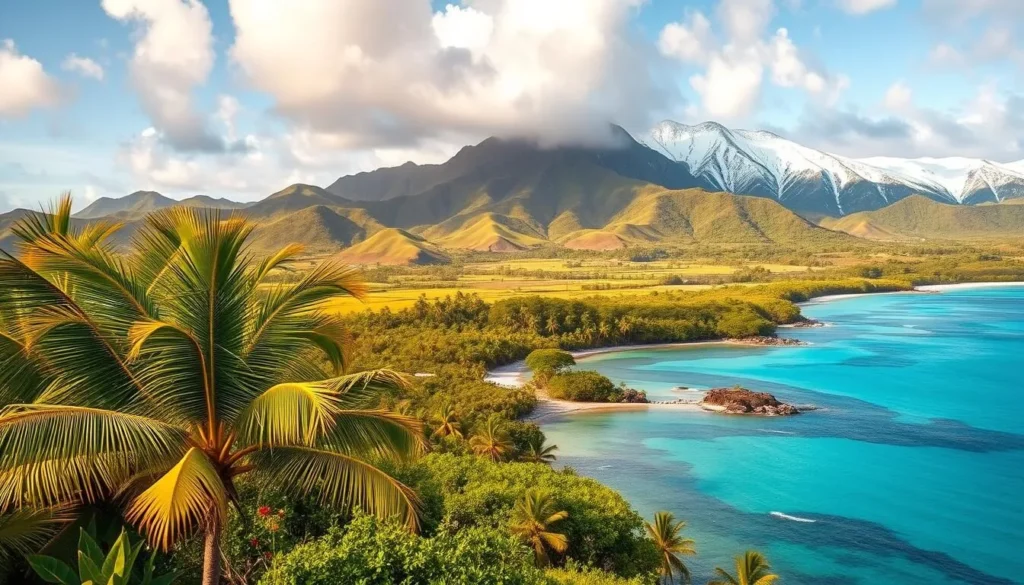
Temperature Variations Throughout the Year
The temperature in Wallis and Futuna is characterized by its steadiness across the seasons. You can expect the tropical climate to remain relatively consistent, making it an attractive destination for travelers seeking warm weather without extreme variations.
Monthly Temperature Averages
The average high temperatures in Wallis and Futuna range from 84°F (29°C) in July and August to 87°F (31°C) in January through April, showing a minimal difference of only 3°F. Nighttime temperatures remain warm, averaging 77°F (25°C) in July and August to 78°F (26°C) during the rest of the year. This stable temperature pattern means that you can enjoy outdoor activities without worrying about cold seasons.
Perceived Temperature and Comfort Levels
The perceived temperature, or “feels like” temperature, is often higher than the actual temperature due to the high humidity levels, especially during the wet season. Your comfort level during outdoor activities will be influenced more by humidity and wind conditions than by actual temperature variations. Understanding these temperature patterns will help you plan your daily activities to avoid the hottest periods of the day.
Rainfall Patterns and Their Impact on Travel
Understanding the rainfall patterns in Wallis and Futuna is crucial for planning a successful trip. The islands experience extreme seasonal variation in monthly rainfall, with rain falling throughout the year.
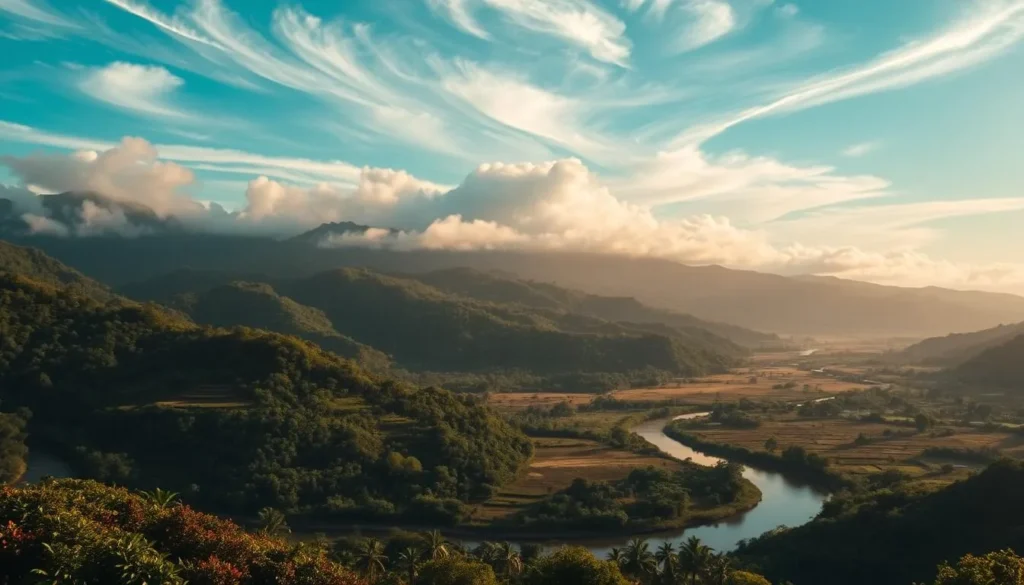
Wettest Months: January and February
January and February are the wettest months, with average rainfall reaching nearly 10 inches in January. This significant rainfall can impact outdoor activities and island exploration. Travelers should be prepared for heavy rain during these months.
Driest Period: July and August
The driest period occurs during July and August, with August receiving only 2.2 inches of rainfall. This makes it an ideal time for beach activities and outdoor adventures. The dry conditions also make it easier to travel between islands and access certain attractions.
By understanding the rainfall patterns, you can plan your trip accordingly and make the most of your time in Wallis and Futuna. The transition months (April-May and October-November) see moderate rainfall, offering a balance between the peak wet and dry seasons.
Cloud Cover and Clear Skies by Month
Throughout the year, Wallis and Futuna witness a notable variation in cloud cover, affecting the sunshine hours and overall weather conditions. This variation significantly impacts the daily incident shortwave solar energy reaching the ground.
The cloud cover patterns in Wallis and Futuna can be divided into two distinct periods: the cloudier months and the clearer months.
Cloudiest Period: October to May
The cloudier part of the year begins around October 13 and lasts for 6.9 months, ending around May 9. During this period, the sky is often overcast or mostly cloudy. January is the cloudiest month, with the sky being cloudy or mostly cloudy 89% of the time. The diffused light during these months creates a softer illumination, beneficial for certain types of photography.
Clearest Skies: June to September
The clearer part of the year starts around May 9 and lasts for 5.1 months, ending around October 13. August is the clearest month, with the sky being clear, mostly clear, or partly cloudy 50% of the time. During these clearer months, you can expect more daily incident shortwave energy per square meter, making it ideal for outdoor activities that rely on sunlight.
Wind Conditions and Seasonal Variations
Wind patterns in Wallis and Futuna vary significantly throughout the year, impacting your travel experience. The average hourly wind speed experiences significant seasonal variation over the course of the year.
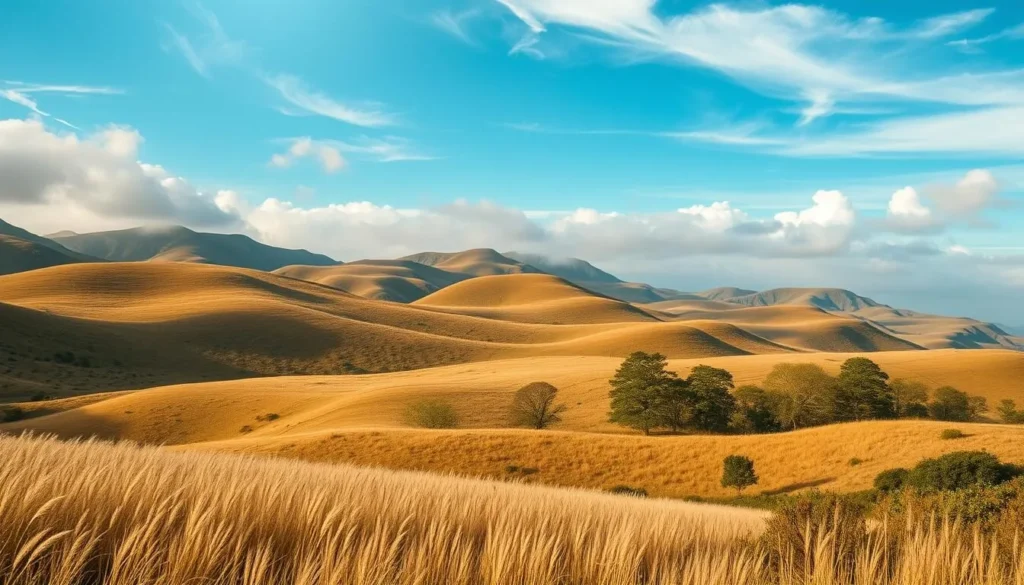
Windier Season
The windier part of the year lasts for 5.0 months, from May 20 to October 22, with average wind speeds of more than 13.1 miles per hour. July is the windiest month, with an average hourly wind speed of 15.4 miles per hour. This can affect boating activities and water sports.
Calmer Months
The calmer time of year lasts for 7.0 months, from October 22 to May 20. March is the calmest month, with an average hourly wind speed of 10.8 miles per hour, creating more favorable conditions for certain water activities. During the calmer months, you’ll find that the reduced wind makes for smoother seas, ideal for snorkeling, diving, and inter-island travel.
Wind conditions can vary throughout the day, with mornings typically being calmer than afternoons. This is worth considering when planning your daily activities.
Water Temperature and Ocean Activities
As you plan your trip to Wallis and Futuna, understanding the water temperature and ocean conditions is crucial for making the most of your island experience. The average water temperature remains relatively consistent throughout the year, ranging from 82°F to 85°F (28°C to 29°C).
This consistency makes Wallis and Futuna an ideal destination for water sports enthusiasts. However, there are certain periods that are more suitable for specific activities.
Optimal Periods for Swimming and Snorkeling
The best months for swimming and snorkeling are generally from June to September. During this period, clearer skies and reduced rainfall result in better visibility in the water, making it ideal for exploring the underwater world.
- Peak water temperatures are reached in March and April, at around 85°F (29°C), making these months particularly comfortable for extended time in the water.
- The beach/pool score is highest from June to September, indicating optimal conditions for water-based activities during these months.
Diving Conditions Throughout the Year
Diving conditions are generally good year-round due to the warm water temperatures. However, visibility is best during the dry season from June to September.
- During the wet season, especially January and February, increased rainfall can reduce water visibility due to runoff from the islands.
- When planning ocean activities, consider both water temperature and other factors like wind conditions, rainfall, and cloud cover for the best experience.
Humidity Levels and Comfort Factors
The tropical climate of Wallis and Futuna means high humidity levels throughout the year. The perceived humidity level, measured by the percentage of time in which the humidity comfort level is muggy, oppressive, or miserable, remains consistently around 99% throughout the year.
Managing High Humidity Year-Round
Managing this high humidity is essential for your comfort. Strategies include staying hydrated, wearing lightweight and breathable clothing, and planning outdoor activities for early morning or late afternoon. Air-conditioned accommodations are highly recommended year-round to provide relief from the humidity, especially for sleeping.
Most Comfortable Periods for Outdoor Activities
The most comfortable periods for outdoor activities are during the dry season, from June to September, when slightly lower humidity combines with cooling trade winds. Despite the consistently high humidity levels, the tourism score indicates that late June to mid-September offers the most comfortable conditions overall.
| Month | Muggy Days |
|---|---|
| January | 31.0 |
| February | 28.0 |
| June | 29.8 |
| July | 30.5 |
| August | 30.7 |
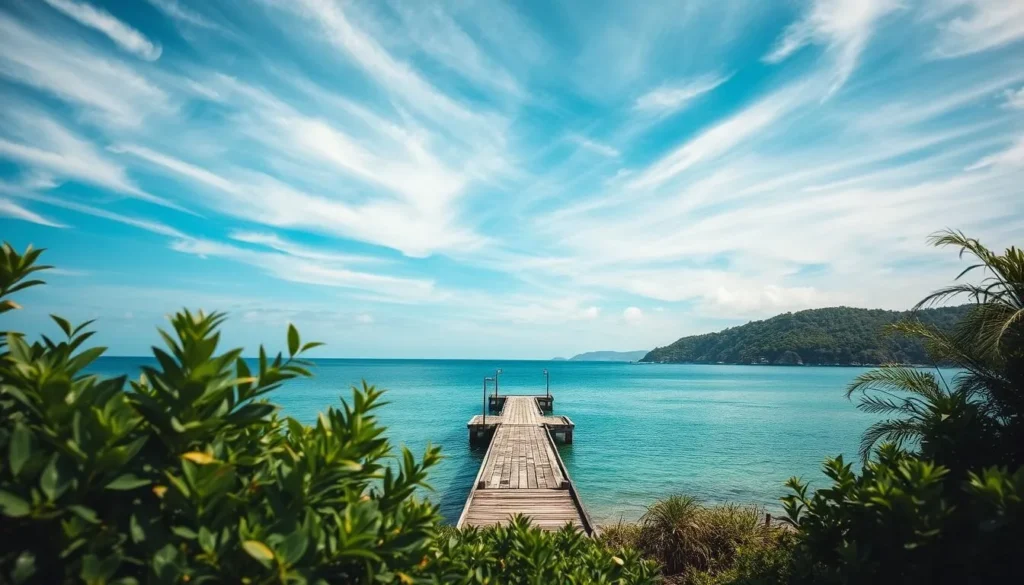
Wallis and Fortuna: Best Months for a Weather-Savvy Trip
Wallis and Futuna’s tropical climate means that choosing the right time to visit can significantly enhance your travel experience. The islands offer a unique blend of activities and weather conditions throughout the year, but certain periods are more favorable than others.
Prime Visiting Window: June to September
The best time to visit Wallis and Futuna for a weather-savvy trip is from June to September. During this period, the islands experience their driest and clearest conditions, making it ideal for outdoor activities. The rainfall is significantly lower, averaging just 2.2-3.4 inches per month, and the temperatures are comfortable. Both the tourism score and beach/pool score peak during late August, making this the optimal time for both general outdoor activities and water-based recreation.
Shoulder Seasons: May and October
If you’re looking for a compromise between the peak season and the wetter months, consider visiting during the shoulder seasons of May and October. These periods offer moderate rainfall and gradually changing conditions that can still accommodate most activities. While not as dry as the prime visiting window, these months can provide a more relaxed atmosphere with fewer tourists.
During the prime visiting window, you’ll benefit from more predictable weather patterns, allowing for easier planning of day trips and outdoor excursions. If you’re sensitive to humidity, the June to September period offers the most relief, as the consistent trade winds help mitigate the effects of the high humidity. Additionally, tourist facilities are generally more active during this peak season, with more tour options and services available to enhance your travel experience.
Planning Around Daylight Hours
To make the most of your visit, it’s crucial to plan around the daylight hours in Wallis and Futuna. Understanding the variations in daylight throughout the year can help you schedule your activities more effectively.
Sunrise and Sunset Patterns
The length of the day in Wallis and Futuna varies over the course of the year. In 2025, the shortest day is June 21, with 11 hours, 21 minutes of daylight; the longest day is December 22, with 12 hours, 55 minutes of daylight. The earliest sunrise is at 5:07 AM on November 19, and the latest sunrise is 1 hour, 1 minute later at 6:08 AM on July 10.
The sunrise and sunset patterns significantly impact your daily planning. For instance, the earliest sunset is at 5:24 PM on May 30, and the latest sunset is 55 minutes later at 6:19 PM on January 22. These patterns can help you plan your day, especially during the dry season when clear skies allow for more direct sunlight.
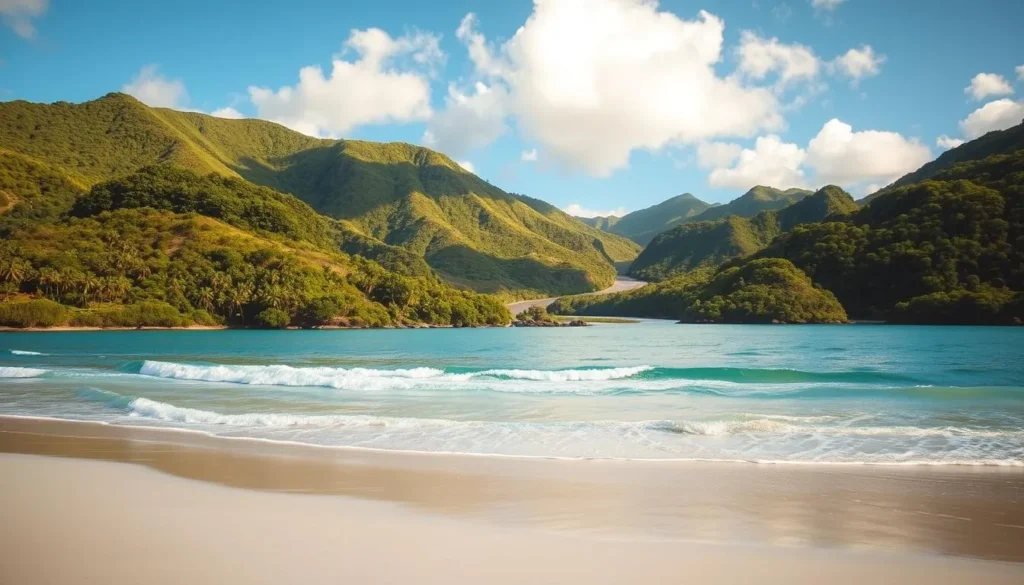
Maximizing Daylight for Activities
Understanding these daylight patterns helps you maximize daylight for activities, especially during the dry season. Morning activities benefit from cooler temperatures and often calmer wind conditions, with average hourly wind speeds typically lower in the early hours.
| Month | Sunrise Time | Sunset Time | Daylight Hours |
|---|---|---|---|
| June | 6:04 AM | 5:30 PM | 11 hours, 26 minutes |
| December | 5:20 AM | 6:15 PM | 12 hours, 55 minutes |
By planning your activities around these daylight hours, you can make the most of your time in Wallis and Futuna, enjoying the pleasant weather and optimal conditions for outdoor pursuits.
Best Months for Specific Activities
When planning your trip to Wallis and Futuna, understanding the best times for various activities can significantly enhance your experience. The islands offer a range of pursuits that are best enjoyed during specific periods of the year, thanks to their unique climate and geography.
Optimal Times for Beach Activities
The beach/pool score favors clear, rainless days with perceived temperatures between 75°F and 90°F. Based on this score, the best time for beach activities is from mid-June to late September, with a peak score in the last week of August. During this period, you can enjoy clear skies, minimal rainfall, and comfortable temperatures, making it ideal for swimming, sunbathing, and other beach activities.
Ideal Periods for Hiking and Exploration
For hiking and land exploration, the dry season (June to September) is the most comfortable time. Trails are less muddy, and the risk of sudden downpours is lower, making it safer and more enjoyable to explore the islands’ natural beauty. Additionally, the clearer skies and better light conditions during this period make it an excellent time for photography enthusiasts to capture vibrant colors and contrasts.
Weather Considerations for Island Hopping
When planning island hopping in Wallis and Futuna, understanding the weather patterns is crucial for a smooth trip. The weather conditions can significantly impact your travel between the islands, which are approximately 140 miles apart.
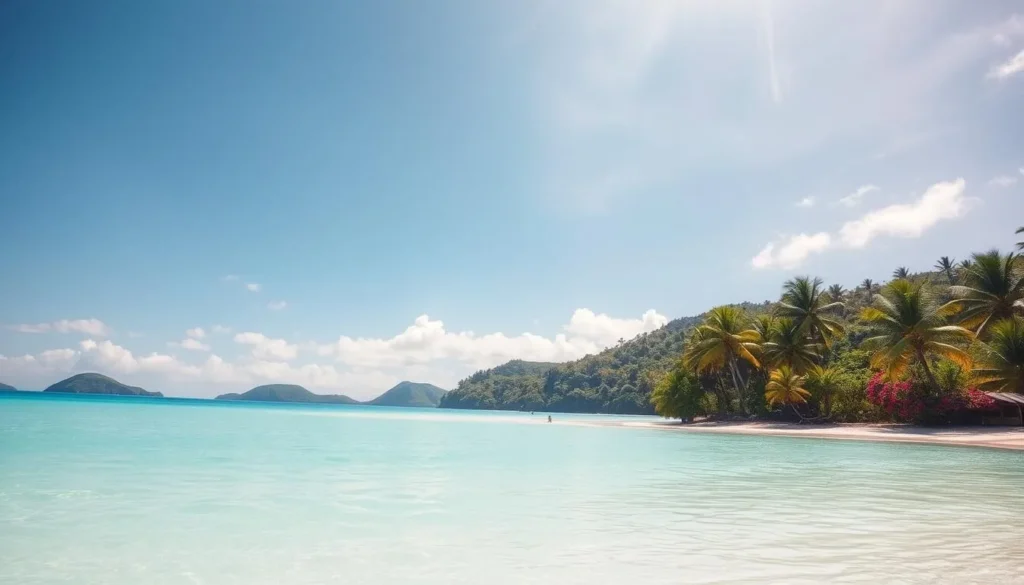
Inter-Island Travel and Weather Impacts
The distance between Wallis and Futuna requires careful planning for boat or air travel. Sea conditions are generally calmer during the morning hours and during the less windy months (November to April), making these times more comfortable for boat transfers. The windier part of the year, from May 20 to October 22, can create choppier seas, especially with average wind speeds exceeding 13.1 miles per hour.
Planning Multi-Island Itineraries
To plan a successful multi-island itinerary, consider building in buffer days to account for potential weather-related delays, especially during the wet season when sudden storms can disrupt schedules. The dry season (June-September) offers more reliable weather conditions, though the stronger winds during this period can impact sea travel. Understanding the average hourly wind speed patterns throughout the year can help you plan smoother inter-island journeys, with March being the calmest month overall.
Packing Tips for Different Seasons
Understanding the seasonal variations in Wallis and Futuna is key to packing the right gear for your trip. The islands’ tropical climate means that temperatures remain relatively consistent throughout the year, but there are significant changes in rainfall and humidity levels between the wet and dry seasons.
Essential Items Year-Round
Regardless of the time of year you visit, there are certain essentials you should always pack. These include lightweight, breathable clothing, sun protection (such as sunscreen, a hat, and sunglasses), insect repellent, and water-resistant footwear suitable for both beach activities and light hiking. The warm ocean temperatures make swimming pleasant year-round, so don’t forget to pack appropriate swimwear and rash guards.
Season-Specific Packing Recommendations
For the wet season (October to May), consider packing quick-dry clothing, a lightweight waterproof jacket or poncho, and waterproof bags or cases for your electronics and important documents. During the dry season (June to September), it’s a good idea to include a light sweater or jacket for cooler evenings and a windbreaker for the windier conditions. Additionally, given the remote nature of these islands, it’s wise to bring any necessary medications and a basic first aid kit.
Comparing Wallis and Futuna to Other Pacific Islands
Comparing the weather patterns of Wallis and Futuna to other Pacific Islands can help you make informed travel decisions. When planning a multi-destination trip, understanding the unique climate characteristics of each island group is crucial.
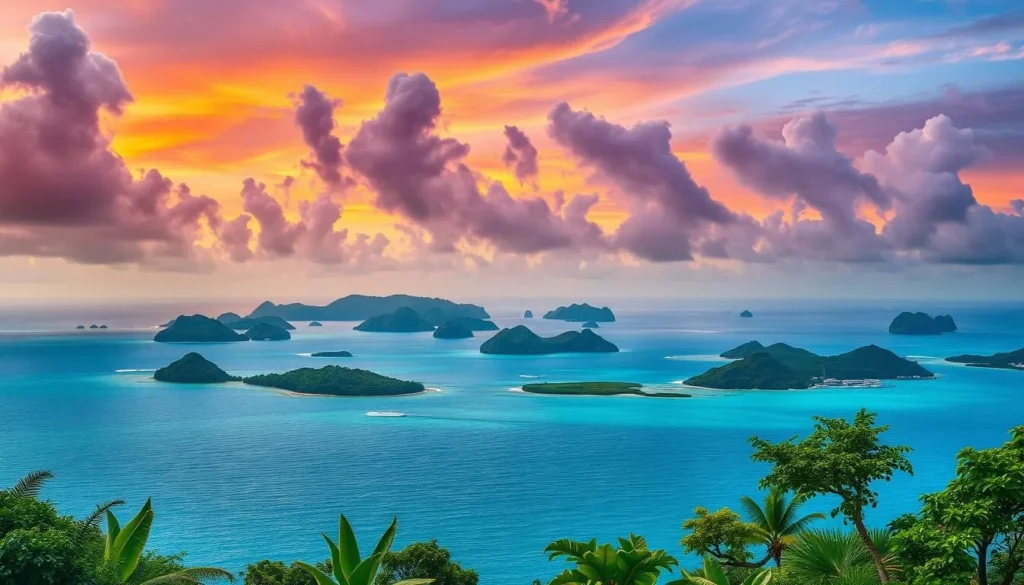
Weather Differences with New Caledonia
New Caledonia, located about 1,200 miles southwest of Wallis and Futuna, experiences a more moderate climate with greater temperature variations throughout the year. While Wallis and Futuna’s temperatures range from 77°F to 87°F, New Caledonia’s temperatures can drop to 64°F in winter months, making it noticeably cooler during June-August. The dry season in New Caledonia, from May to October, offers more predictable weather patterns compared to its wet season.
Climate Contrasts with the Marshall Islands
The Marshall Islands, situated about 2,000 miles northeast of Wallis and Futuna, share similar temperature patterns but experience different rainfall distributions. Their dry season occurs from January to March, contrasting with Wallis and Futuna’s dry season from June to September. The average daily high temperature in the Marshall Islands ranges from 85°F to 86°F, while the lows are around 80°F, showing minimal variation throughout the year.
| Island Group | Dry Season | Temperature Range |
|---|---|---|
| Wallis and Futuna | June to September | 77°F – 87°F |
| New Caledonia | May to October | 64°F – 87°F |
| Marshall Islands | January to March | 80°F – 86°F |
Understanding these regional differences helps you plan multi-destination Pacific trips that optimize weather conditions across different island areas. Whether you’re looking for beach activities or exploring the islands, knowing the best time to visit each location can enhance your travel experience.
Cultural Events and Weather-Related Traditions
As you explore Wallis and Futuna, you’ll discover that the islands’ cultural events are intricately linked with the weather patterns throughout the year. The local culture is deeply influenced by the seasonal changes, shaping the rhythm of life on these Pacific islands.
The dry season, which spans from June to September, is a period of vibrant festivals that take advantage of the clearer skies and higher average daily incident shortwave energy. This creates ideal conditions for outdoor celebrations, making it the peak tourism period.
Festivals During the Dry Season
During the dry season, you can experience significant cultural events like Bastille Day celebrations on July 14. These festivities feature traditional dancing, music, and feasts under the clearer skies, showcasing the islands’ rich cultural heritage.
Wet Season Celebrations
In contrast, wet season celebrations often focus on indoor activities or are adapted to accommodate the weather. Many religious festivals occur around Christmas and New Year, when rainfall is significant, highlighting the resilience and adaptability of the local culture.
| Season | Average Daily Incident Shortwave Energy (kWh/m²) | Notable Events |
|---|---|---|
| Dry Season (June-Sept) | Above 5.4 | Bastille Day, Cultural Festivals |
| Wet Season (Oct-May) | Below 4.5 | Christmas, New Year Celebrations |
Conclusion: Making the Most of Your Wallis and Futuna Visit
For those looking to visit Wallis and Futuna, knowing the optimal travel period can significantly enhance your trip. The best time to visit these islands is from mid-June to late September, with the peak season being the last week of August, according to the beach/pool score.
By planning your travel during the dry season, you’ll not only maximize your opportunities for outdoor activities but also minimize disruptions from rainfall and overcast conditions. However, it’s essential to be prepared for high humidity levels and occasional rain showers, even during the best time to visit.
The beach/pool score peaks in late August, making this period ideal for water-based activities and beach relaxation. Regardless of when you visit, embracing the islands’ unique climate and adapting your expectations will enhance your overall experience. Consider combining your trip with visits to nearby Pacific islands, keeping in mind the different optimal travel periods for each destination.
Ultimately, Wallis and Futuna offer a rewarding experience year-round for the flexible traveler who comes prepared for the tropical conditions and appreciates the authentic cultural experiences these remote islands provide.
The above is subject to change.
Check back often to TRAVEL.COM for the latest travel tips and deals.
